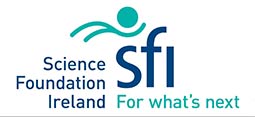Technology Development (innovation & new principles)
Next generation cavity-based interferometric spectrometer development
New measurement principles for cavity-based interferometric spectrometers to detect fingerprint spectra of species and their isotopologues in the near infrared region is being explored. The experimental approach relies on cavity-based dual comb spectroscopy (CABADUCOS).
Dual Comb Gain Switched Frequency Comb Spectroscopy
Overview
Frequency-comb lasers generate a reliable set of evenly spaced, phase-coherent, and narrow-band spectral lines. In addition to the established applications of spectrally extensive, octave-spanning frequency combs (FCs) derived from mode-locked lasers in optical metrology and atomic clocks, FCs have been acknowledged as a superior light source for absorption spectroscopy. To enhance the sensitivity of in absorption measurements, FCs are used in conjunction with stable optical cavities. In this project, we are engaged in the design and development of a Gain Switched Frequency Comb (GSFC) laser configured to operate within the near-infrared wavelength range, specifically below the C band (see Fig. 1). Typically, GSFCs are produced through the direct modulation of commercially available laser diodes, such as a distributed feedback laser, using a radio frequency sine wave. The generation of narrow linewidth and reduced intensity noise is achieved through the utilization of external optical injection in a master-slave configuration. GSFCs are tunable frequency combs characterized by a simpler and more cost-effective design when compared to mode-locked femtosecond FC lasers. This straightforward and economical approach facilitates wavelength tunability in both comb and line spacing, albeit with a constrained number of comb lines. GSFCs can also be integrated as a monolithic device. GSFCs are frequently deployed as benchtop units in optical telecommunication within the C-band. However, our investigation aims to assess their viability as an economical light source for the purpose of trace gas and radical sensing. We intend to employ this novel GSFC for trace gas sensing by coupling it passively into stable optical cavity configured in an off-axis arrangement within a gas flow cell setup. (see Fig.2&3).



Objectives:
- To design and develop a GSFC laser operating below C band (Designing GSFCs in this wavelength range poses a challenge due to the scarcity of fundamental components).
- Test the feasibility of this new GSFC in trace gas sensing: Targeted gas species are Hydroperoxyl radical, Formaldehyde and Ammonia.
- The test beds will include a 6 m single-pass cell in the laboratory and a customized portable Off-axis Cavity Enhanced Absorption Spectrometer (Off-CEAS) configured within a flow cell (see Fig. 2&3).
- The targeted species will be measured in the same Off-CEAS test bed using a tunable External Cavity Diode Laser (1450 – 1540 nm), and the performance will be evaluated against the GSFC approach (see Fig. 2&3).
- Both single comb and dual comb configurations for GSFCs will undergo testing.
- In the single comb configuration, a commercially purchased Fourier transform spectrometer (Vertex 80, Bruker) will also serve as the detector.
Project Outputs
Journal Articles
1. E. P. Martin, S. T. Ahmad, S. Chandran, A. Rosado, A. A. Ruth, P. M. Anandarajah. Stability characterisation and application of mutually injection locked gain switched optical Frequency combs for dual comb Spectroscopy, Journal of Lightwave Technology (2023), 31669:1.
Conference Presentations
1. S. Chandran, A. A. Ruth, E. P. Martin, A. Rosado, E. P. Soderholm, P. M. Anandarajah. Application of a 100 MHz Gain Switched Frequency Comb Laser for Cavity Enhanced Trace Gas Detection, Field Laser Application in Industry and Research (FLAIR 2022), September 2022, Aix-les-Bains, France
2. A. A. Ruth, S. Chandran, E. P. Martin, A. Rosado, E. P. Soderholm, J. K. Alexander, F. Peters, P. M. Anandarajah. Ammonia Sensing with a Gain Switched Frequency Comb of 100 MHz Free Spectral Range using Off-Axis Cavity-Enhanced Absorption Spectroscopy, European Geosciences Union General Assembly 2022, May 2022, Vienna, Austria


